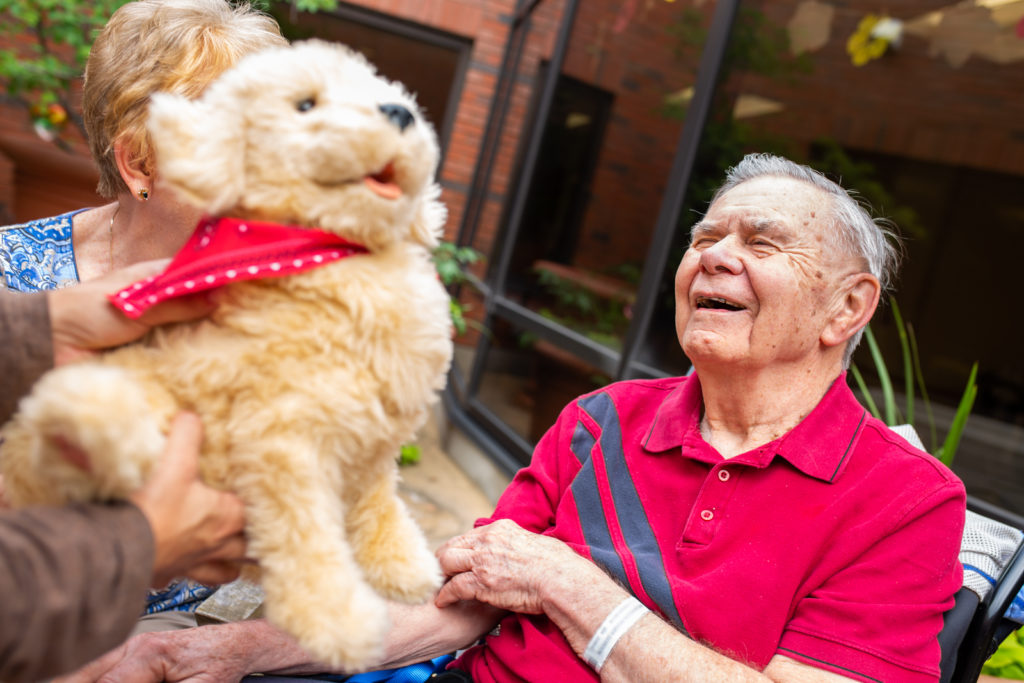
Robotic pets delight patients with dementia
“They don’t claw ya, you don’t have to feed ‘em, and they don’t need kitty litter.”
Wise words from Jackie Gale, a patient at Hamilton Health Sciences’ St. Peter’s Hospital (SPH). She’s referring to the hospital’s new litter of robotic cats. The digital kitties are furry, but not too feisty—the perfect temperament to put patients at ease.
“When we found out about these robotic cats, we thought they would be great for our patients,” says Jean Riley, a therapeutic recreationist on the Medically Complex unit at SPH. “They have so many benefits.”
Jean reached out to Hasbro, the toy company that makes the pets, to place an order, and it ended up donating a trio of cats to the unit. Since they arrived, they’ve become very popular with patients and staff. Each cat is paired up with a patient for the duration of their stay in the hospital.
Pet therapy on-demand
“What’s great about these pets is that they are very portable, and can be brought out when they’re needed most,” says Jean. “Staff and volunteers can use them, and it helps them have positive interactions with patients.”
“The pets promote spontaneous interaction”
Jean says the robotic cats help to spark conversation and memories. When Jean gave a cat to Donna, a patient who’s been at SPH since March, they started to chat about pets they’ve had over the years. “My daughter’s cat Smokey used to wait at her bedroom door when she was away,” Donna recalled.

The robotic pets are also in use on SPH’s Behavioural Health unit. This unit caters to people with serious dementia, and the team has been using Hasbro’s robotic cats and dogs for about a year with great success. Their collection of ten cats and dogs was purchased through the Hamilton Health Sciences Foundation Family Grants Program.
“The pets promote spontaneous interaction between staff and patients both one on one, and in groups,” says Crissie Leng, a therapeutic recreationist on the Behavioural Health unit. “It’s not easy for people with dementia to interact the way they used to. The robotic pets break down barriers and give them something to focus on. When patients interact with them, they also start to interact more with our staff and their peers.”
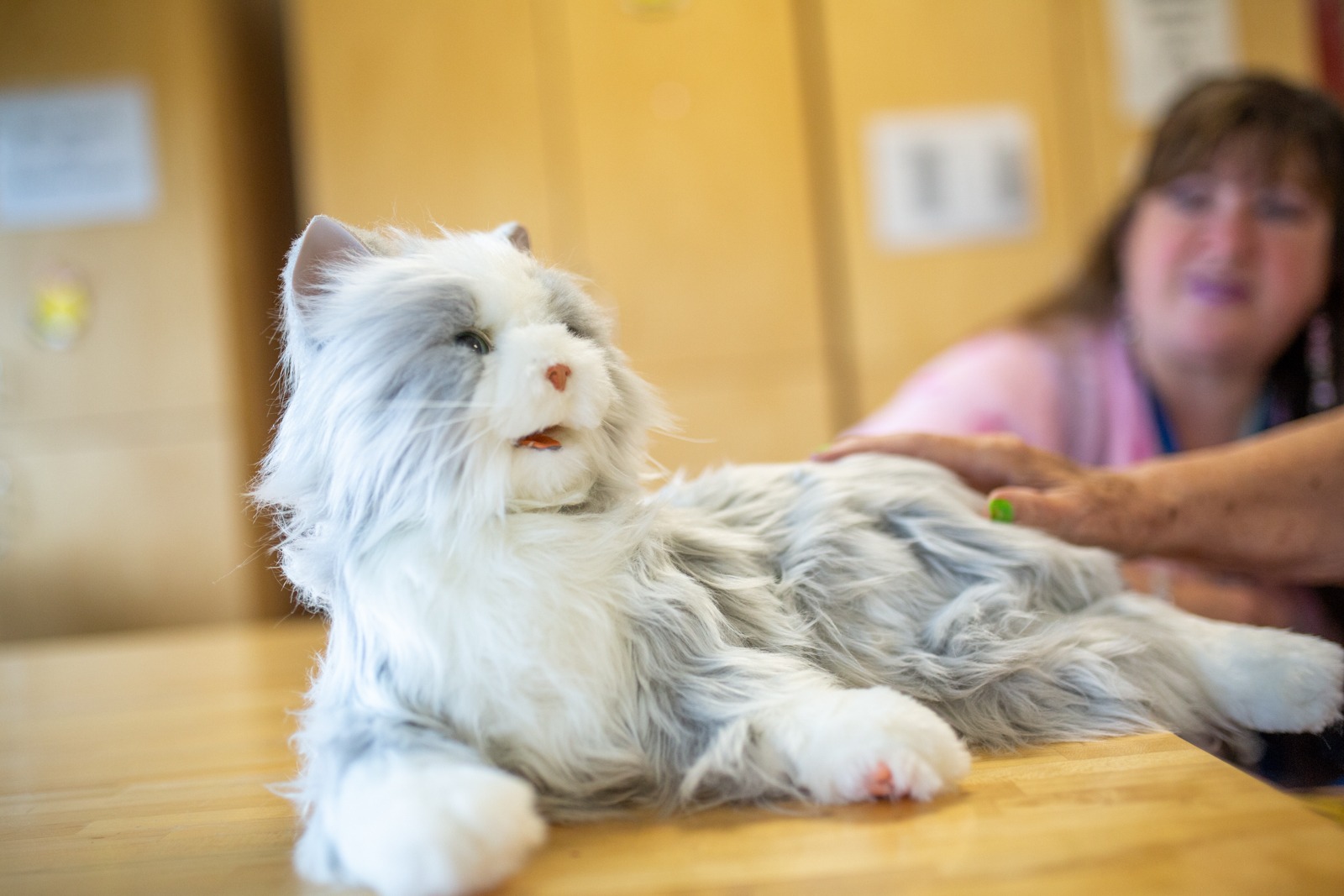
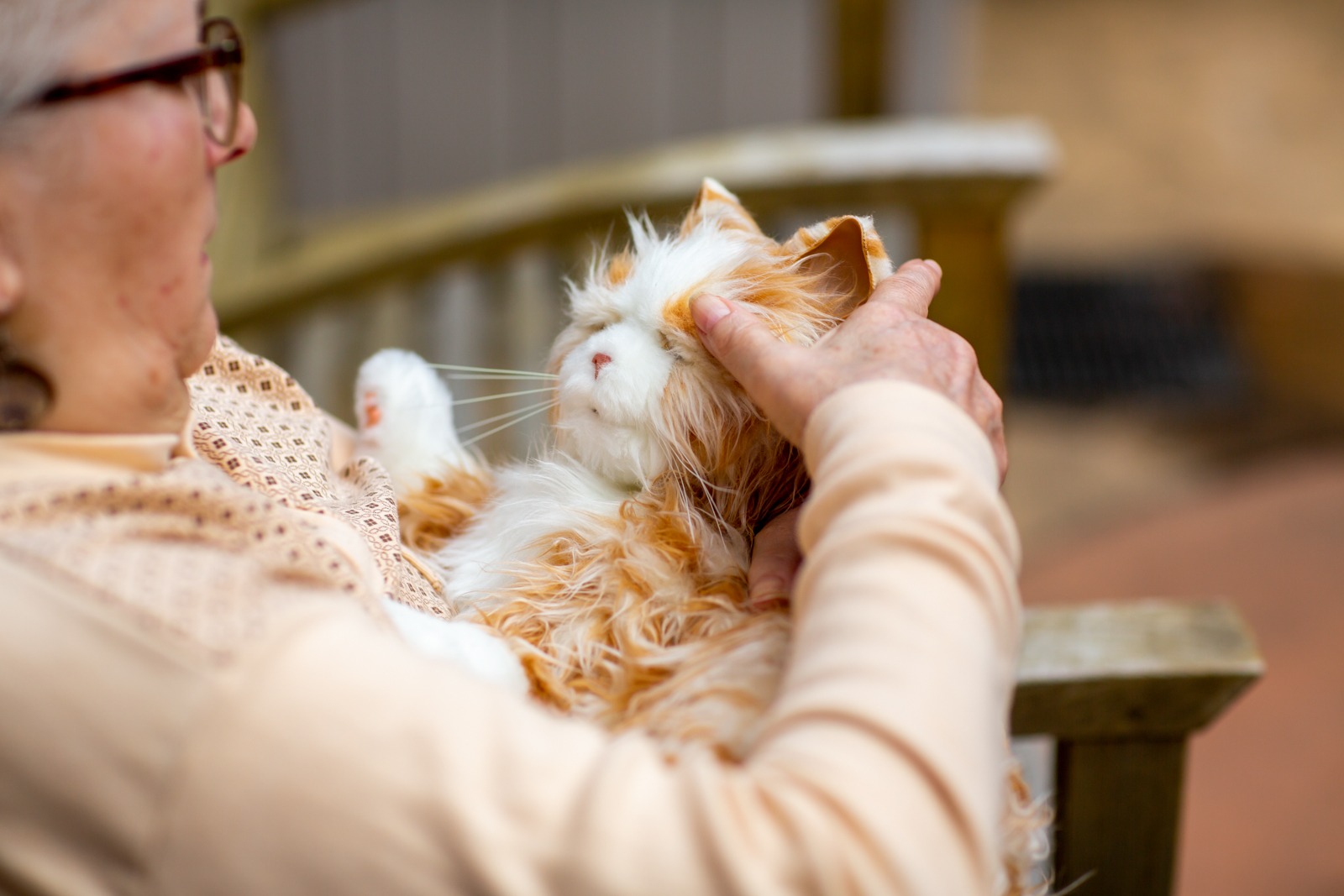
Furry friends meet many needs
On both units, the pets are used for a number of reasons—different people benefit from them in different ways. They motivate patients to move by giving them a reason to do so, like reaching to pet a dog, or brushing a cat. They make sounds and respond to touch, which gives patients sensory stimulation. They can be brought to a patient who is getting upset or anxious to help soothe them.
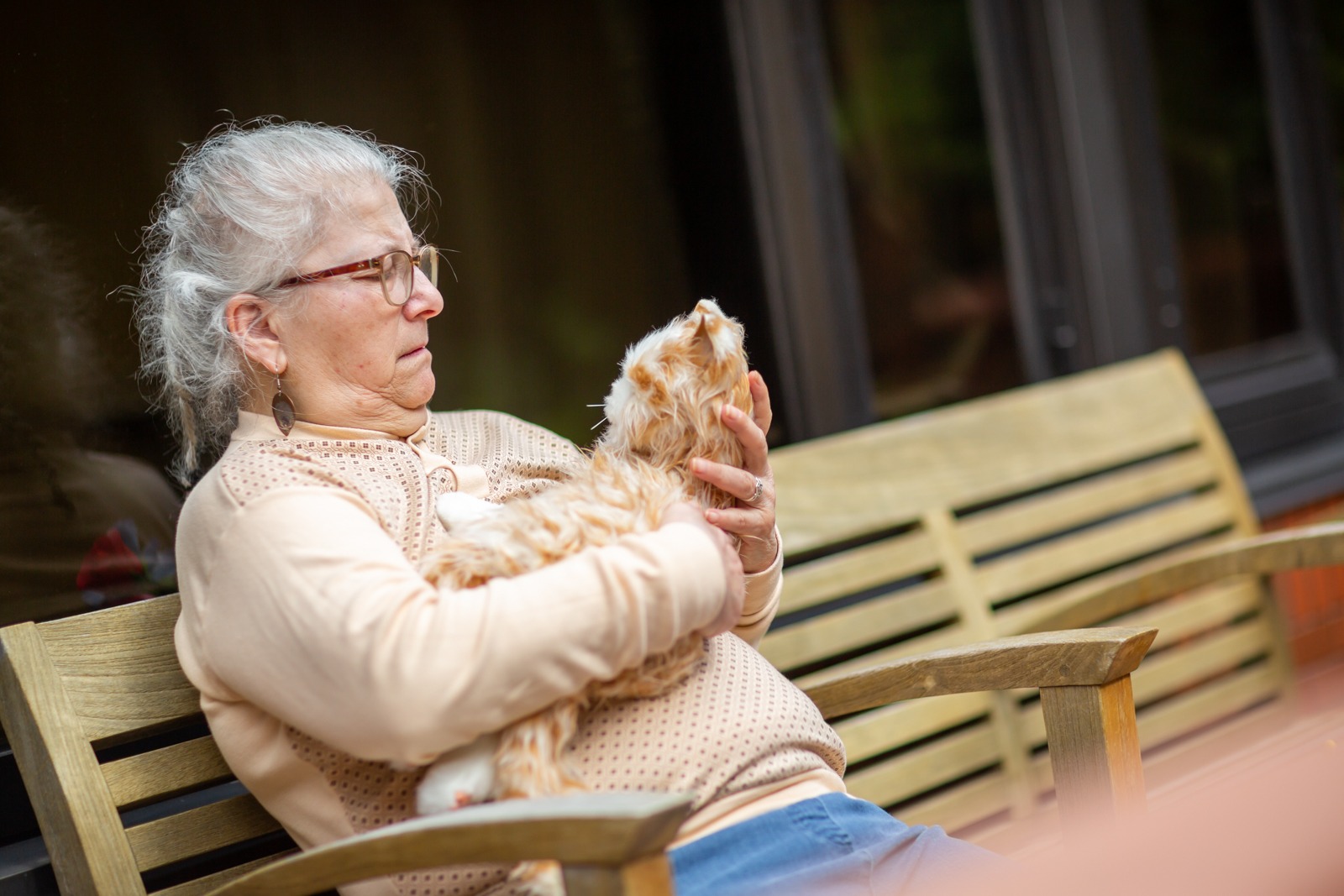
Gail, a patient on the Behavioural Health Unit, has become very fond of her orange robotic cat, named Fluffy. When she gets agitated, petting the cat and listening to it purr helps to calm her.
“Gail, and some other patients actually ask for their pets by name,” says Crissie.
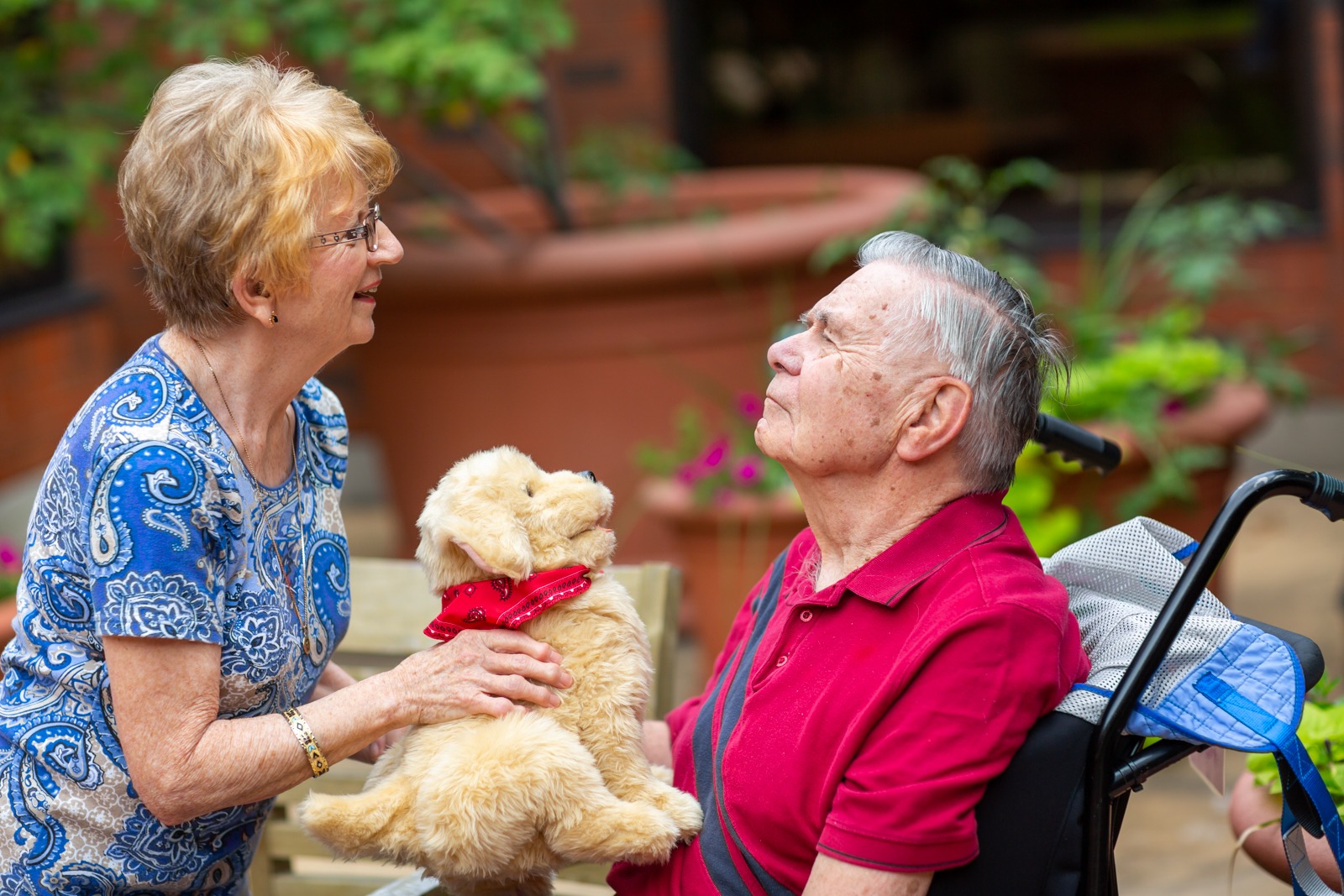
Roger, another patient on the Behavioural Health Unit, was never an animal person, but Daisy the robotic dog gives his family a chance to engage him in a different way. He doesn’t talk a lot, but when Daisy is present, he can socialize without having to converse.
Expanding their brood of robotic pets
The robo pets aren’t a replacement for live therapy pet visits, which are still a bit hit at SPH. Instead, they’re a chance to get the benefits real pets offer, in a more spontaneous way.
“Because they are so portable, and easy to use, they are great for spontaneous interaction,” says Jean. “We do a lot of scheduled programming for patients, which is great, but this meets needs that can’t be met through scheduled programming.”
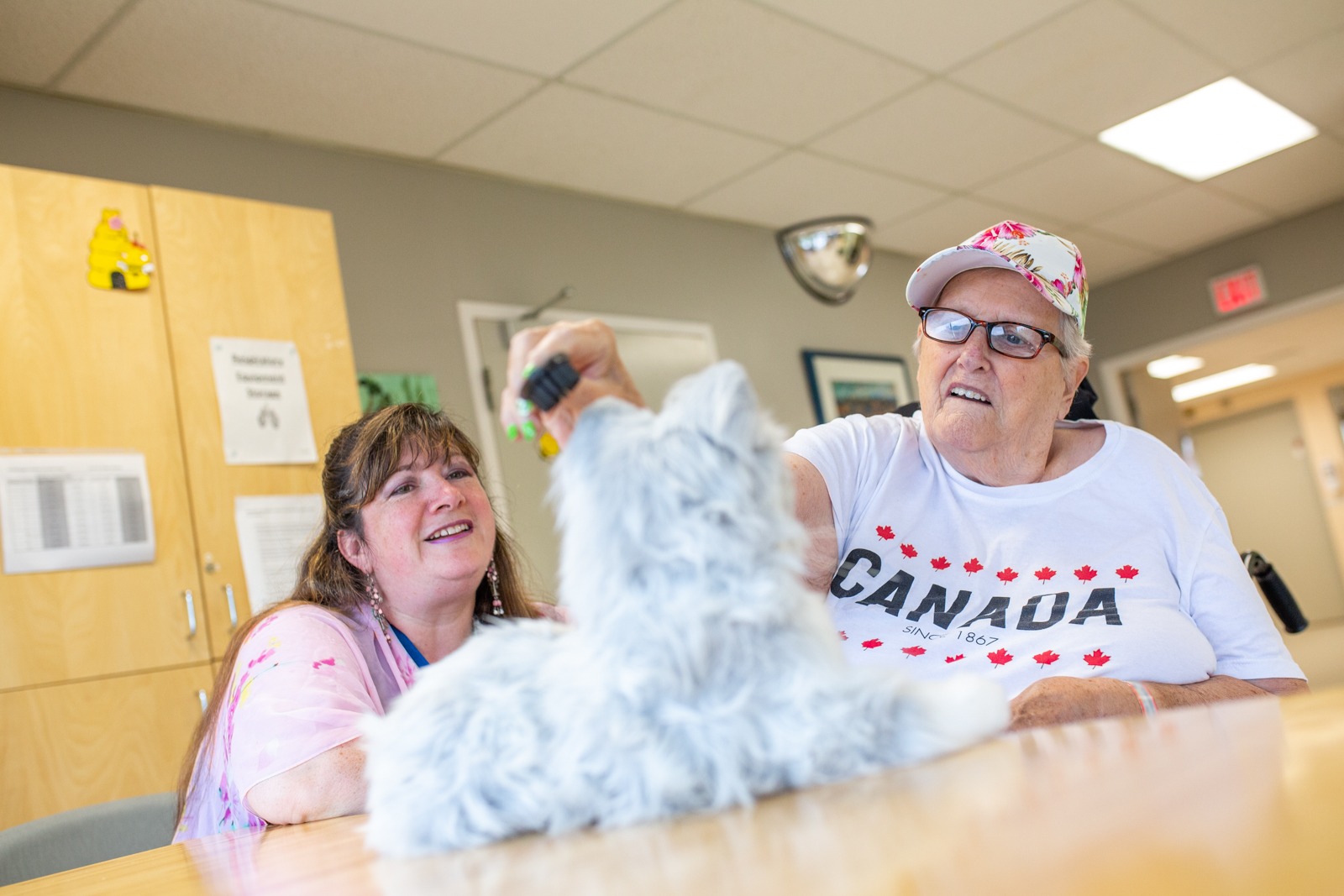
Both programs are hoping to get more robotic pets in the near future. The pets must be paired with a specific patient to prevent the spread of germs, so each additional cat or dog means another patient can benefit from this unique therapy.
